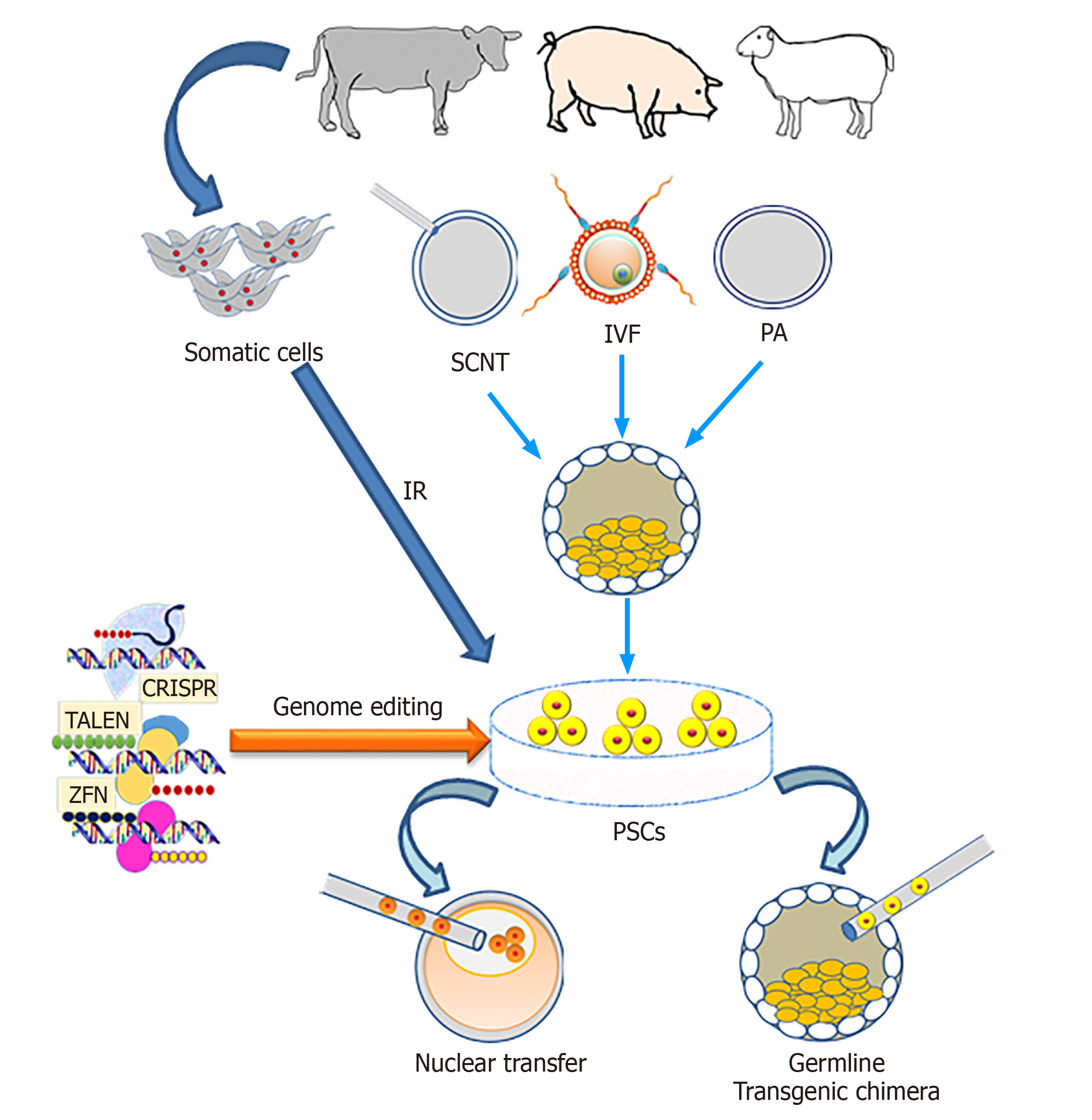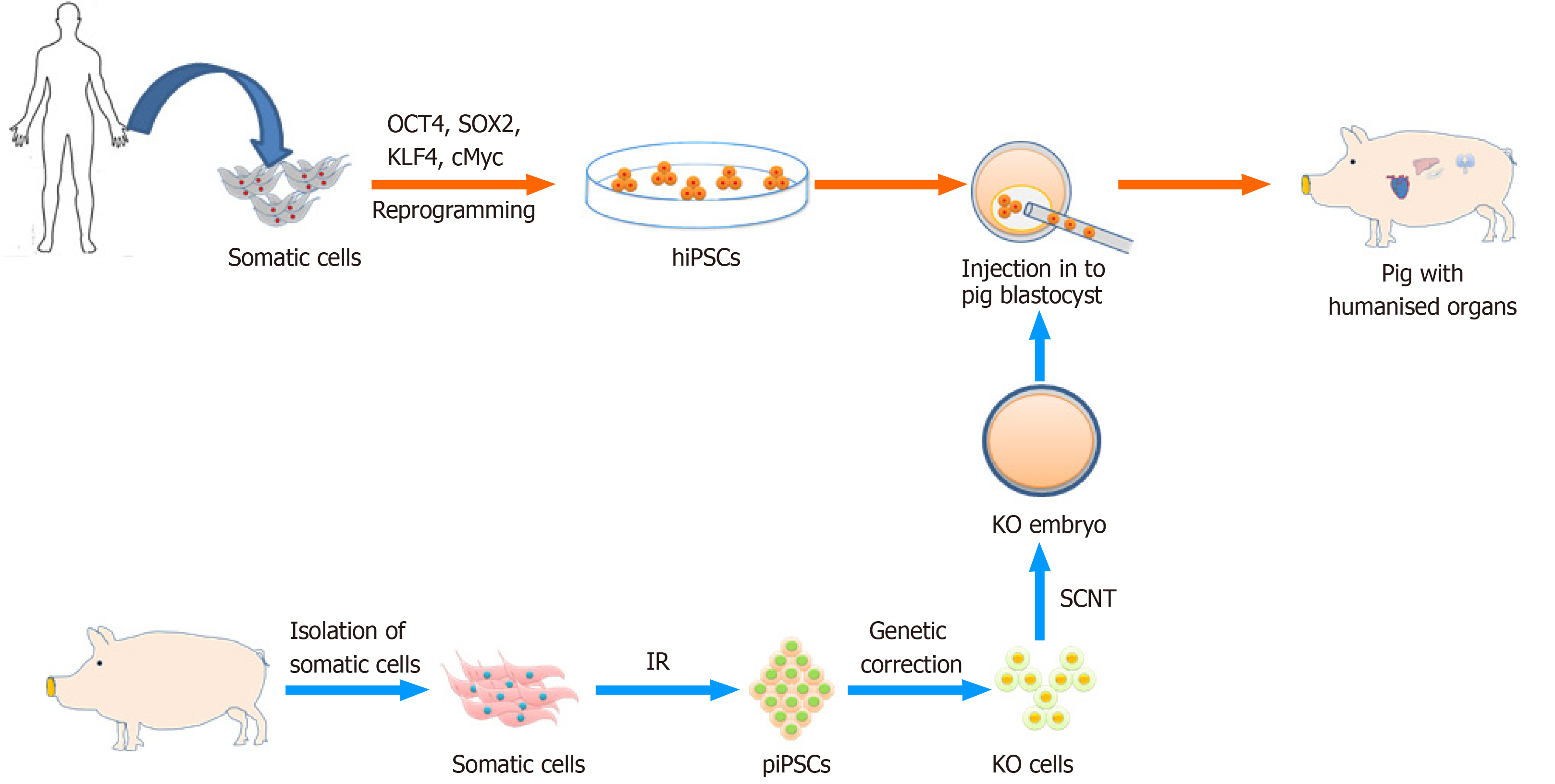Copyright
©The Author(s) 2021.
World J Stem Cells. Jan 26, 2021; 13(1): 1-29
Published online Jan 26, 2021. doi: 10.4252/wjsc.v13.i1.1
Published online Jan 26, 2021. doi: 10.4252/wjsc.v13.i1.1
Figure 1 Derivation of pluripotent stem cells from livestock and their differentiation properties.
IVF: In vitro fertilization; ES Cells: Embryonic stem cells; PA: Parthenogenetic activation; pES Cells: Parthenogenetically derived embryonic stem cells; SCNT: Somatic cell nuclear transfer; nES Cells: Nuclear transfer derived embryonic stem cells; IR: Induced reprogramming; iPS cells: Induced pluripotent stem cells.
Figure 2 Involvement of pluripotent stem cells in the reproductive cell cycle through reprogramming, differentiation and development.
Figure 3 Outline of the production of transgenic livestock using pluripotent stem cells.
IR: Induced reprogramming; SCNT: Somatic cell nuclear transfer; IVF: In vitro fertilization; PA: Parthenogenetic activation; PSCs: Pluripotent stem cells; CRISPR: Clustered regularly interspaced short palindromic repeats; TALEN: Transcription activator-like effector nucleases; ZFN: Zinc finger nucleases.
Figure 4 Outline of the production of humanized organs in livestock by chimera formation.
OCT4: Octamer-binding transcription factor 4; SOX2: Sex determining region Y-box 2; KLF4: Kruppel-like factor 4; c-MYC: MYC Proto-Oncogene; hiPSC: Human induced pluripotent stem cells; piPSC: Porcine induced pluripotent stem cells; IR: Induced reprogramming; KO cells: Knock-out cells; SCNT: Somatic cell nuclear transfer.
- Citation: Kumar D, Talluri TR, Selokar NL, Hyder I, Kues WA. Perspectives of pluripotent stem cells in livestock. World J Stem Cells 2021; 13(1): 1-29
- URL: https://www.wjgnet.com/1948-0210/full/v13/i1/1.htm
- DOI: https://dx.doi.org/10.4252/wjsc.v13.i1.1
















